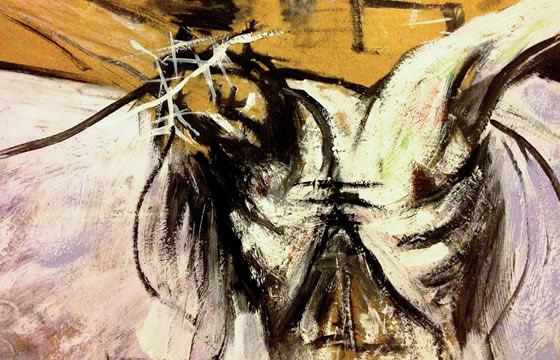 When celebrating Mass it can be difficult to remember the beautiful liturgy celebrates an act of shocking vileness.
When celebrating Mass it can be difficult to remember the beautiful liturgy celebrates an act of shocking vileness.
Our Catholic faith is shot through with paradox. One of them is the strangeness that accompanies our idea of beauty.
In Jesus Christ we have the incarnation of the sublime and transcendent love of the Godhead – the perfectly One, Good and Beautiful. And yet those Transcendentals find their ‘glory’ in the bloodied, humiliating crucifixion of the Son. This is why, for some, irony is the trope of the Christian life: a faith that finds the greatest expression of beauty in the wounded, disfigured Son crucified.
But does this really make sense? Can the crucifixion really be described as beautiful without distorting the category to the point whereby it is no longer recognisable? There’s the rub. For the Christian there is a terrible tension, indeed paradox, at the heart of our relationship to the ‘natural’ category of the beautiful. Our access to beauty is transformed by grace into a supernatural apprehension, not accessible by nature alone. And this apprehension is shaped by that crucifixion of the Son in all of its shocking vileness.
This paradox is so strange yet, it can seem, to go by unnoticed. Our liturgy, at its most sublime, is ordered, harmonious, and yes, gloriously beautiful. Think of the greatest music, painting, sculpture in Western civilisation and you’ll find yourself in religious territory. This sublime art reveals a deep truth just as it is juxtaposed and confronted by the presence of a crucifix, usually suspended above the altar, or fixed above the tabernacle, metres from the choir and the organ.
The beauty of the Catholic Mass lies in this outrageous juxtaposition, which, precisely in its sheer paradox, elevates us, by grace, to see the sublime, transformative beauty in the disfigured horror of our Saviour’s broken body – handed over, given up, and consumed by us. The contemplation of this paradox of the beauty of Christ can be the ‘sword that pierces’ my heart.
We need to let the shock of the Christ-event reveal its terrible beauty; a loving beauty that can wound and transform our hearts, if only we will allow it to do so.
Image: Study for Crucifixion, 1947. Graham Sutherland.
Oil on canvas, 97 x 118 cm. Vatican Museum.
Preparation study for his large Crucifixion in St Matthew’s Church, Northampton.
He was inspired not only by the alter of Isenheim
by the German painter Matthias Grunewald,
but also by the photographic images of Holocaust survivors.